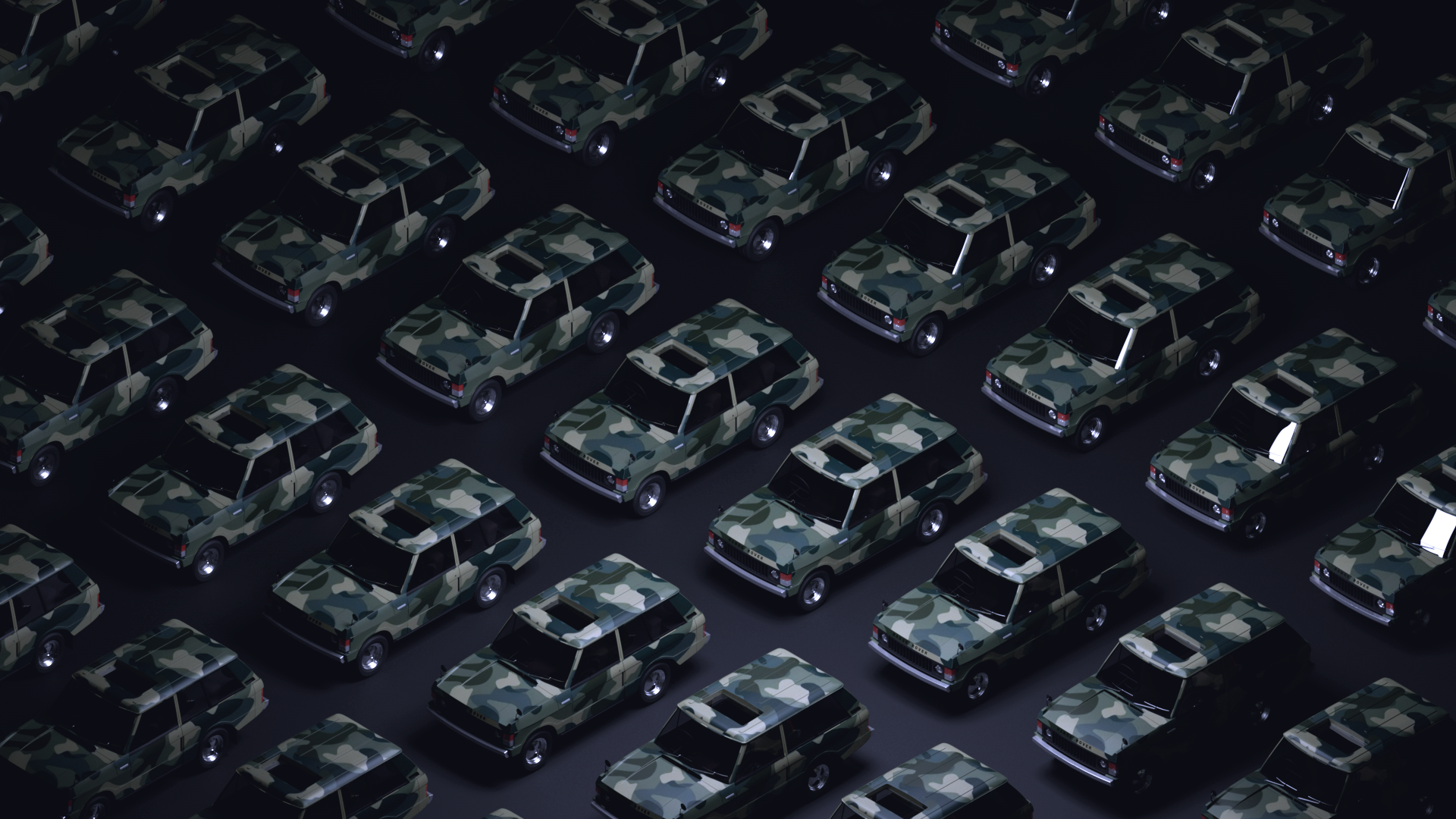- Category
- War in Ukraine
Old London Cars for Ukraine Must Move Quickly, Before Russia Goes Further

You may remember the buzz around the transfer of old cars from London to Ukraine. They were set to be scrapped under the city’s new ultra-low emission zone regulations, so Ukraine asked for them to be sent to the country’s frontline instead. After much debate, the Mayor of London, Sadiq Khan, agreed. But what has happened since? And have any arrived?
Volunteers across Ukraine and beyond have continuously asked for more lifesaving vehicles for the country’s frontline. Cars, 4x4s, ambulances, and trucks are vital for medical evacuations and military operations. With a slow start to the UK ULEZ car scrapping and donation scheme, calls for more vehicles ring out across the community supporting the country defending itself from Russia’s brutal invasion.
In 2023, the UK introduced a new ULEZ scrapping scheme, which provided grants to people to get rid of their cars that did not meet London’s new emissions standards. London's Mayor Sadiq Khan introduced this scheme to reduce the city’s air pollution levels. Initially, it was only possible to scrap the cars. But after much backlash, in March 2024, the city’s transport department (TfL) agreed to provide car owners with the option of donating their vehicles to Ukraine instead.
Vehicles through this scheme are starting to reach areas in Ukraine where they’re needed most. Recently, the Guardian reported that a 20-vehicle convoy finally reached Ukraine last weekend. Still, volunteers and charities call for more London locals to donate their cars to Ukraine via the scheme—and allow for these cars to also reach the Ukrainian military.
“What do you equate the value of a vehicle, compared to the lives of four children?” questioned Brandon Mitchell, a Canadian-British frontline volunteer paramedic for the Hospitallers Battalion. Many others, like him, have witnessed the life-threatening impact of not having enough vehicles for civilians and military alike.
“My truck died that day, and I thought that so did I. But it was a very good return on investment.”
“The war is a rapidly dynamic situation. I think that all of us who have lived two or more years in real war conditions are not driving the cars that we started with,” Brandon told us in an interview, recalling the multiple cars he's been through during his time-saving lives in Ukraine. Brandon has been evacuating military and civilians from the most dangerous frontlines in Ukraine since the full-scale invasion began in 2022.
Not only has he fundraised for his own evacuation vehicles, but he has also supported many other battalions and individuals. When the scheme was first introduced, Brandon advocated for cars to be donated to Ukraine instead of being scrapped. Though he supports the donation scheme, he says it's nowhere near enough.
“The first vehicle I fundraised for in June of 2022 was my Pajero. At first, it mostly did simple, non-critical tasks, like pulling people out of the mud. But, in the last month of its life, it had transported over 300 civilians through Soledar, often under active machine gun fire. It transported no less than 50 people during its last week alone,” Brandon recalled.
“We crossed over to the other side of the river and evacuated nine people. Four of them were children. On the way back to get 17 more, I was blown up in that truck after driving over a landmine.”

But he adds, “What do you equate the value of a vehicle to, compared to the lives of four children? My truck died that day, and I thought that I did too. But it was a very good return on investment.”
What is the ULEZ Scheme, and who’s involved?
Initially, Sadiq Khan blocked requests for vehicles that did not comply with the new ultra-low emission scheme to be donated to Ukraine. They were all set to be scrapped.
Vitalii Klitschko, the Mayor of Kyiv, wrote to Mr Khan and pleaded for the scrapped cars to be sent to the frontlines. Klitschko said that doing so had “enormous potential” as the vehicles could be used in a “variety of life-saving and transport roles.” This was a sentiment that many campaigners shared, too.
So in March of 2024, Sadiq Khan made a surprising U-turn, agreeing to the demands of Ukrainians and their supporters. Ukraine, Brandon, and other volunteers welcomed this. However, they are now frustrated with the speed of the delivery.
Transport for London (TfL), which leads the scrappage scheme, confirmed with us that 44 vehicles have been donated to Ukraine as part of the scheme. They also said that they have appointed British Ukrainian Aid (BUA) to run the scheme on their behalf.
BUA and its trustees have supported Ukraine for several years, working directly with organizations on the ground. In addition to the ULEZ scheme, in 2023 alone, they delivered over 300 medical and evacuation vehicles.
In April, BUA planned an event to publicize the ULEZ scheme and attract more Londoners to donate their vehicles to Ukraine. However, their event was postponed, which caused some upset amongst volunteers. A TfL spokesperson told us that "due to pre-election restrictions, TfL could not support BUA in publicizing their work at this time. Therefore, BUA decided to postpone their event until after the election.”
Campaign rules mean that publicly funded bodies cannot participate in events “seen as unfairly promoting one election candidate over another.” However, local elections took place at the beginning of May, which means that campaigning on the issue is possible again.
Dr Rainer-Elk Anders, a BUA Trustee, confirmed with us that several vehicles have already reached Ukraine, including the latest convoy that arrived last weekend.
“We are ready to support anyone who wants to participate in the scheme. These vehicles will enable us to evacuate and transport the injured, including children, women, and the elderly. They will help medical personnel and aid reach critical locations. We will be able to save more lives and support communities in need,” Dr Anders explained.
“Sometimes it seems that cars are taking too long to reach Ukraine. We completely understand that. We want cars delivered as quickly as possible, but there is a process that we must follow to deliver them efficiently. We are working with humanitarian organizations and medical battalions to deliver exactly what they need,” Dr Anders added. “These cars provide a variety of support, but we need more, and we ask anyone considering applying for the scheme to reach out and do so. We are ready for your vehicles.”
“Everyday old cars are sat in the UK, another Ukrainian dies.”
As a UK-registered charity, BUA is regulated by the Charity Commission. Under UK charity law, BUA can donate vehicles for humanitarian or logistical use but not to the military. This can potentially cause complications in areas currently under extreme military pressure.
“We’re trying to get our guys the hell off frontline positions right now, but we don’t have the cars to get them out,” Richard Woodruff, a volunteer at Frontline Kitchen, explained. “I cannot state this enough: Every day old cars are sat in the UK, and another Ukrainian dies.”
Brandon calls on British residents to donate their old cars and also write to their local councils and the UK government to make them “budge.” He believes that they must not only expand the ULEZ scheme but also allow for the ULEZ vehicles to reach military groups. “It’s a slap in the face, quite frankly. With more pressure and minimal effort, I do not doubt we could turn the 44 vehicles into 400 or even 4,000 vehicles.”
He explains, "In Kherson, we had to pick up the pressure of a different brigade because they simply didn’t have the vehicles. That's all good when it's quiet for us, but then when it intensifies for both groups, people die—people die who don't need to die.”
He adds: “That’s how the cookie crumbled, purely due to the lack of vehicles.”
Armored military vehicles, such as older Humvees and M113 armored personnel carriers, have indeed been included in the new US aid package. This is also the case for UK aid promised to Ukraine. However, there is no doubt that even more vehicles are needed—particularly as Russia intensifies its new counter-offensive in the Kharkiv Region of Ukraine.
After such a long-drawn-out process with aid bills and the inclusion of Ukraine in the ULEZ vehicle scheme, the speed of delivery must increase.

-46f6afa2f66d31ff3df8ea1a8f5524ec.jpg)
-6359eca46c72bde40a90abaaadd6eaa8.png)
-29a1a43aba23f9bb779a1ac8b98d2121.jpeg)


-206008aed5f329e86c52788e3e423f23.jpg)
